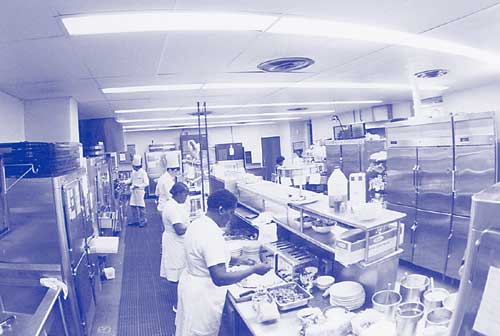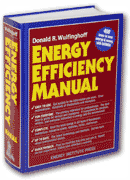Overview of…
Note 51. Factors in Lighting Quality
The energy conservation measures in the Energy Efficiency Manual stress that saving energy in lighting must be combined with high visual quality. Good lighting is visually effective, comfortable, and energy efficient. This Note gives you a grounding in the factors that create lighting of high visual quality.
Visual quality consists of visual efficiency combined with visual comfort. Visual efficiency is a measure of a person’s ability to perform tasks involving vision. Visual efficiency can be measured. For example, persons can be tested to measure their rate of making proofreading errors under various lighting conditions. Visual comfort is related to the ease of seeing the task, which involves the same factors as visual efficiency. Visual comfort is very subjective, being a matter of feelings and perceptions. It is measured with a rather vague criterion called “visual comfort probability.”
The most important factors in visual quality are the intensity of illumination on the area of interest, the uniformity of illumination, the formation of shadows, background lighting, glare from the light source, veiling reflections, and color rendering.
Illumination intensity, measured in lux or footcandles, has a major effect on both visual efficiency and comfort. The Note explains how the effects may conflict. In particular, high levels of illumination increase task efficiency but cause discomfort. Appropriate illumination levels depend on the size and contrast of the details being viewed, the age of the viewer, and other factors.
Uniformity of task illumination is considered important to visual comfort, although the effect cannot be measured accurately. Shadows are a related factor. Shadows are needed within the material being viewed to provide contrast for visual efficiency, but excessive covering shadows in the viewing area reduce visual quality. The Note explains how shadows occur, and their relationship to light sources, the viewing area itself, and the viewer.
Background lighting is lighting outside the immediate area of the task, i.e., what you see out of the corner of your eye or what you see when you look up from the task. The issue is how much difference is acceptable between the brightness (“luminance”) of the task and the background. The Note explains how background lighting affects visual efficiency and visual comfort, as well as its effect on esthetics.
The glare of light sources can be seriously detrimental to visual comfort. This Note explains the factors that determine the perception of glare, including the size of the light source, its position in the visual field, duration of exposure, background brightness, and the age of the viewer.
Veiling reflections are perhaps the most underestimated problem in lighting design. Veiling reflections reduce visual efficiency by reducing contrast, they cause discomfort by making vision more difficult, and they waste energy. The Note explains these effects. It also shows you how to avoid veiling reflections, primarily by careful placement of light sources.
Color is responsible for a large part of the information and pleasure that people derive from vision. The Note explains how the human eye is able to see color, the color characteristics of sunlight and different types of lamps, the relationship of color vision to illumination level, and how to compensate for impaired color vision. The color rendering of light sources is rated by the “color rendering index.”
Click here to return to the Table of Contents


